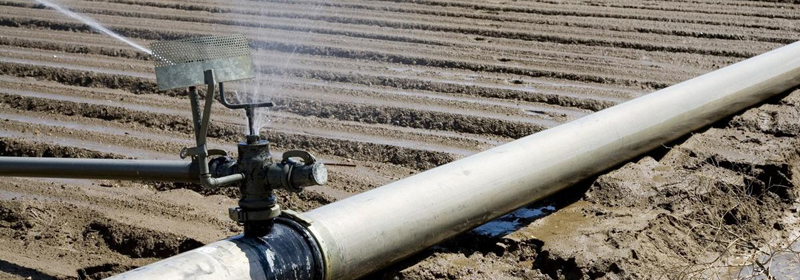Water Hammer effect refers to the phenomenon of pressure fluctuation and vibration caused by the rapid change of fluid flow in the closed pipeline system (including pump) , just like a hammer made of water. Its instantaneous pressure can greatly exceed the normal pressure, and often have destructive effects.
When an open valve suddenly closes, due to the inertia of the pressure flow, a flow shock wave is produced and a destructive effect is produced, which is the positive water hammer.
Conversely, closed valve in the sudden opening, will also produce water hammer, called negative water hammer, also have some damage, but not as big.
In general, the sudden inhalation of the closing element into the seat as the valve approaches closure is known as the cylinder-melting locking effect.
The cylinder block effect is caused by a low-thrust actuator that does not have sufficient thrust to remain close to the seat, resulting in a sudden closure of the pump or valve, resulting in a water hammer effect. For Control Valves, in some cases, valves with fast-opening flow characteristics can also cause the water hammer effect.
Long Term Effects of Water Hammer
Although the water hammer makes a lot of noise, the real damage is caused by mechanical failure. Because the kinetic energy changes rapidly into static line pressure, the water hammer may break the line or damage the pipe support and the pipe joint. For Valves, water hammer can produce serious vibration through the Spool, it may lead to Spool, gasket or packing failure, damage the valve structure.
Damage to pipes and fittings: The sudden pressure surges caused by water hammer can put significant stress on pipes and fittings, which can eventually lead to cracking or other types of damage. Over time, this can cause leaks or even burst pipes.
Increased wear and tear on valves: Valves are particularly vulnerable to damage from water hammer, as they are often the first component to experience the sudden pressure surges. Over time, this can lead to increased wear and tear on valves, which can affect their reliability and lead to leaks or other problems.
Reduced efficiency of equipment: Water hammer can also reduce the efficiency of equipment such as pumps and turbines, as the sudden pressure surges can cause components to vibrate or move out of alignment. This can reduce the performance of the equipment and increase maintenance requirements.
Water quality issues: Water hammer can cause fluctuations in water pressure, which can lead to problems with water quality. For example, if there is a backflow prevention device installed on the system, water hammer can cause it to malfunction, which can lead to contamination of the water supply.
Noise and vibration: Water hammer can produce a loud banging noise and cause vibration in the piping system, which can be disruptive and annoying for occupants of the building. Over time, this can also lead to damage to surrounding structures or equipment.

So how do we prevent the water hammer effect?
Here are some methods to prevent water hammer effect:
● Install pressure relief valve: Installing pressure relief valve on the pipeline can help control the pressure in the pipeline and prevent water hammer effect caused by high pressure.
● Install buffer: Installing buffer on the pipeline can absorb the shock wave generated by water hammer effect, thereby reducing equipment damage.
● Close valves slowly: When closing valves, they should be closed slowly to reduce pressure changes and reduce the risk of water hammer effect.
● Reasonable pipeline design: The design of the pipeline should consider factors such as the speed, pressure, and diameter of the fluid to reduce the risk of water hammer effect.
● Regular pipeline inspection: Regularly inspect the status of the pipeline and the operation of the equipment, repair or replace damaged components in a timely manner to maintain the normal operation of the pipeline.
The above are some methods to prevent water hammer effect, but the specific solution should be determined based on the specific situation and characteristics of the pipeline system.
If you encounter the problem of water hammer effect, you can consult us at sales@covnavalve.com for more detailed and accurate advice.
Post time: Jul-28-2021




